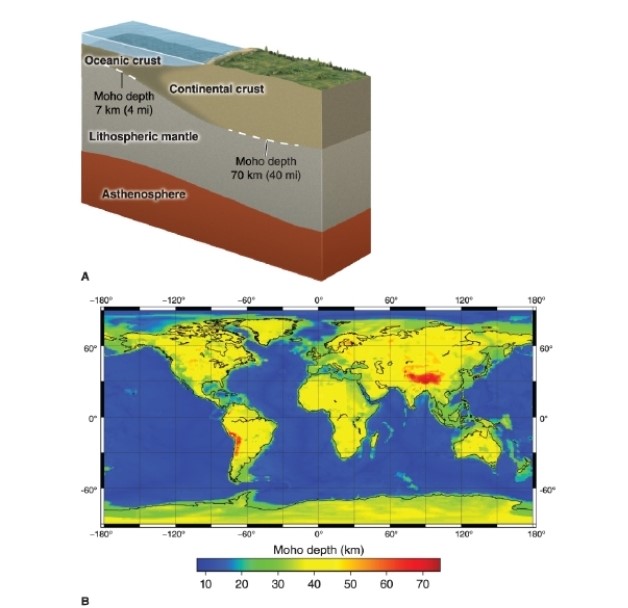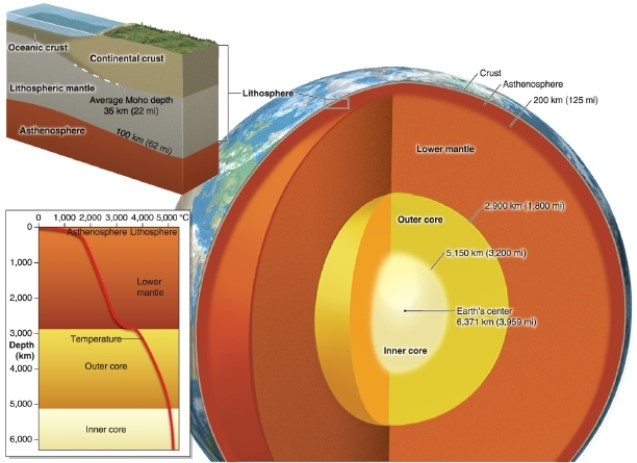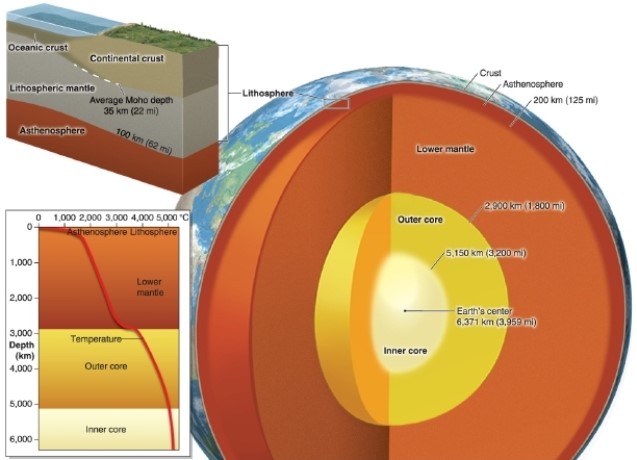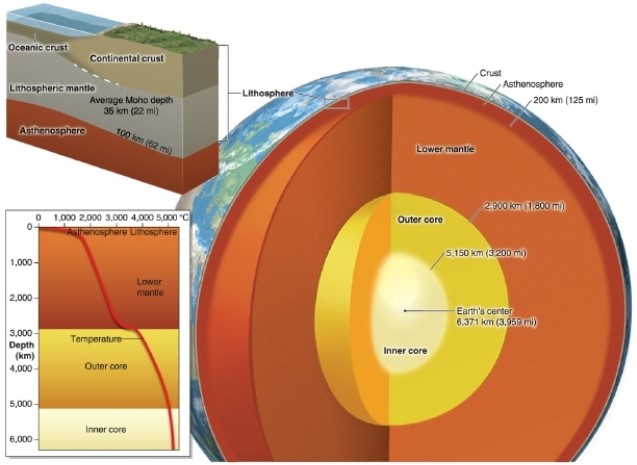Deck 12: Earth History, Earth Interior
Question
Question
Question
Question
Question
Question
Question
Question
Question
Question
Question
Question
Question
Question
Question
Question
Question
Question
Question
Question
Question
Question
Question
Question
Question
Question
Question
Question
Question
Question
Question
Question
Question
Question
Question
Question
Question
Question
Question
Question
Question
Question
Question
Question
Question
Question
Question
Question
Question
Question
Question
Question
Question
Question
Question
Question
Question
Question
Question
Question
Question
Question
Question
Question
Question
Question
Question
Question
Question
Question
Question
Question
Question
Question
Question
Question
Question
Question
Question
Question

Unlock Deck
Sign up to unlock the cards in this deck!
Unlock Deck
Unlock Deck
1/124
Play
Full screen (f)
Deck 12: Earth History, Earth Interior
1
Today Mars has no more oceans, but it still has a thick and warm atmosphere.
False
2
The Anthropocene is a new geologic epoch that began approximately in 1800 with the Industrial Revolution.
True
3
Uniformitarianism is the principle that changes in Earth's physical systems are rapid and perceivable on human time scales.
False
4
Compass needles point to true north.

Unlock Deck
Unlock for access to all 124 flashcards in this deck.
Unlock Deck
k this deck
5
Mars once had huge liquid oceans and a thick atmosphere.

Unlock Deck
Unlock for access to all 124 flashcards in this deck.
Unlock Deck
k this deck
6
The Moho is the transition between the outer core and the mantle.

Unlock Deck
Unlock for access to all 124 flashcards in this deck.
Unlock Deck
k this deck
7
All planets in the solar system orbit around Earth.

Unlock Deck
Unlock for access to all 124 flashcards in this deck.
Unlock Deck
k this deck
8
Scientists have evidence that life once existed on Mars.

Unlock Deck
Unlock for access to all 124 flashcards in this deck.
Unlock Deck
k this deck
9
The mantle is liquid molten rock that slowly flows.

Unlock Deck
Unlock for access to all 124 flashcards in this deck.
Unlock Deck
k this deck
10
Basalt is a dark volcanic rock found mostly in oceanic crust.

Unlock Deck
Unlock for access to all 124 flashcards in this deck.
Unlock Deck
k this deck
11
The mantle includes the asthenosphere and the lowest portion of the lithosphere.

Unlock Deck
Unlock for access to all 124 flashcards in this deck.
Unlock Deck
k this deck
12
Catastrophic events sometimes play an important role in the history of Earth's physical systems.

Unlock Deck
Unlock for access to all 124 flashcards in this deck.
Unlock Deck
k this deck
13
When melted, basalt rock flows easily downslope.

Unlock Deck
Unlock for access to all 124 flashcards in this deck.
Unlock Deck
k this deck
14
The asthenosphere is the weakest layer of Earth's solid interior and easily deforms, causing the lithosphere above it to move.

Unlock Deck
Unlock for access to all 124 flashcards in this deck.
Unlock Deck
k this deck
15
Earth's human population is currently just over 7 billion.

Unlock Deck
Unlock for access to all 124 flashcards in this deck.
Unlock Deck
k this deck
16
The earliest fossils are about 3.5 billion years old.

Unlock Deck
Unlock for access to all 124 flashcards in this deck.
Unlock Deck
k this deck
17
The geothermal gradient refers to the increasing temperature of Earth's atmosphere.

Unlock Deck
Unlock for access to all 124 flashcards in this deck.
Unlock Deck
k this deck
18
Earth is the warmest planet in the solar system.

Unlock Deck
Unlock for access to all 124 flashcards in this deck.
Unlock Deck
k this deck
19
The oldest rocks on Earth are dated using radiocarbon dating.

Unlock Deck
Unlock for access to all 124 flashcards in this deck.
Unlock Deck
k this deck
20
True north and magnetic north are at the same location.

Unlock Deck
Unlock for access to all 124 flashcards in this deck.
Unlock Deck
k this deck
21
Earth is the closest planet to the Sun.

Unlock Deck
Unlock for access to all 124 flashcards in this deck.
Unlock Deck
k this deck
22
The superposition principle assumes that younger layers of rock lie above older layers below.

Unlock Deck
Unlock for access to all 124 flashcards in this deck.
Unlock Deck
k this deck
23
Scientists believe that most of Earth's water resides in the Earth's interior rather than on the surface.

Unlock Deck
Unlock for access to all 124 flashcards in this deck.
Unlock Deck
k this deck
24
Most of Earth's biological history consists of single-celled bacteria.

Unlock Deck
Unlock for access to all 124 flashcards in this deck.
Unlock Deck
k this deck
25
Radiocarbon dating is a form of radiometric dating.

Unlock Deck
Unlock for access to all 124 flashcards in this deck.
Unlock Deck
k this deck
26
Earth's earliest life was plants.

Unlock Deck
Unlock for access to all 124 flashcards in this deck.
Unlock Deck
k this deck
27
Nearly 40% of Earth's land surface is used to grow food for people.

Unlock Deck
Unlock for access to all 124 flashcards in this deck.
Unlock Deck
k this deck
28
The core, the mantle, and the lithosphere are the three major layers of Earth's interior.

Unlock Deck
Unlock for access to all 124 flashcards in this deck.
Unlock Deck
k this deck
29
Our solar system is found in the Milky Way galaxy.

Unlock Deck
Unlock for access to all 124 flashcards in this deck.
Unlock Deck
k this deck
30
The Moon is thought to have formed after a large object named Theia collided with Earth early in the history of the solar system.

Unlock Deck
Unlock for access to all 124 flashcards in this deck.
Unlock Deck
k this deck
31
Earth is the second smallest planet in the solar system.

Unlock Deck
Unlock for access to all 124 flashcards in this deck.
Unlock Deck
k this deck
32
Absolute age compares the age of one object or event to the age of another without specifying how old either is.

Unlock Deck
Unlock for access to all 124 flashcards in this deck.
Unlock Deck
k this deck
33
The inner core of Earth is made of solid iron and nickel.

Unlock Deck
Unlock for access to all 124 flashcards in this deck.
Unlock Deck
k this deck
34
The Anthropocene marks the beginning of farming.

Unlock Deck
Unlock for access to all 124 flashcards in this deck.
Unlock Deck
k this deck
35
By 2050 there could be as many as 14 billion people on Earth.

Unlock Deck
Unlock for access to all 124 flashcards in this deck.
Unlock Deck
k this deck
36
The absolute age of an object indicates how old it is in years.

Unlock Deck
Unlock for access to all 124 flashcards in this deck.
Unlock Deck
k this deck
37
About 10% of all mammal biomass is people and domesticated animals.

Unlock Deck
Unlock for access to all 124 flashcards in this deck.
Unlock Deck
k this deck
38
As seismic waves travel through Earth's interior, they bend and refract as a result of different densities of material they pass through.

Unlock Deck
Unlock for access to all 124 flashcards in this deck.
Unlock Deck
k this deck
39
Oceanic crust is composed of basalt.

Unlock Deck
Unlock for access to all 124 flashcards in this deck.
Unlock Deck
k this deck
40
Distances in space are usually given in light years, the distance light travels as measured in years.

Unlock Deck
Unlock for access to all 124 flashcards in this deck.
Unlock Deck
k this deck
41
Oceanic crust is lighter than continental crust.

Unlock Deck
Unlock for access to all 124 flashcards in this deck.
Unlock Deck
k this deck
42
The magnetosphere protects Earth's surface from the harmful effects of the solar wind.

Unlock Deck
Unlock for access to all 124 flashcards in this deck.
Unlock Deck
k this deck
43
Which is the leading theory used to explain why Mars lost its atmosphere and oceans?
A)It lost its magnetic field that protected it from the solar wind.
B)It lost its atmosphere and the oceans evaporated to space.
C)Mars drifted too far away from the Sun to support an atmosphere and oceans.
D)The planet became too small to support an atmosphere and oceans.
A)It lost its magnetic field that protected it from the solar wind.
B)It lost its atmosphere and the oceans evaporated to space.
C)Mars drifted too far away from the Sun to support an atmosphere and oceans.
D)The planet became too small to support an atmosphere and oceans.

Unlock Deck
Unlock for access to all 124 flashcards in this deck.
Unlock Deck
k this deck
44
How did Earth's oceans form?
A)from volcanic gases
B)from early plants
C)from rocky asteroids
D)from chemical reactions
A)from volcanic gases
B)from early plants
C)from rocky asteroids
D)from chemical reactions

Unlock Deck
Unlock for access to all 124 flashcards in this deck.
Unlock Deck
k this deck
45
Which sequence puts the solar system formation in the correct order?
A)protoplanetary disk-star development-solar system formation
B)solar system formation-star development-protoplanetary disk
C)star development-protoplanetary disk-solar system formation
D)star development-solar system formation-protoplanetary disk
A)protoplanetary disk-star development-solar system formation
B)solar system formation-star development-protoplanetary disk
C)star development-protoplanetary disk-solar system formation
D)star development-solar system formation-protoplanetary disk

Unlock Deck
Unlock for access to all 124 flashcards in this deck.
Unlock Deck
k this deck
46
On California's San Andreas Fault, the Pacific plate is moving north and the North American plate is moving south.

Unlock Deck
Unlock for access to all 124 flashcards in this deck.
Unlock Deck
k this deck
47
The crust is the outermost portion of Earth's layers.

Unlock Deck
Unlock for access to all 124 flashcards in this deck.
Unlock Deck
k this deck
48
Earth is __________ billion years old.
A)3.5
B)4.6
C)8
D)13.5
A)3.5
B)4.6
C)8
D)13.5

Unlock Deck
Unlock for access to all 124 flashcards in this deck.
Unlock Deck
k this deck
49
The crust is composed of both continental crust and oceanic crust.

Unlock Deck
Unlock for access to all 124 flashcards in this deck.
Unlock Deck
k this deck
50
The magnetosphere shields Earth from __________.
A)ultraviolet radiation
B)X-rays
C)gamma rays
D)the solar wind
A)ultraviolet radiation
B)X-rays
C)gamma rays
D)the solar wind

Unlock Deck
Unlock for access to all 124 flashcards in this deck.
Unlock Deck
k this deck
51

Which statement can be arrived at by examining this figure?
A)The depth of the Moho is constant.
B)The depth of the Moho is greatest beneath oceans.
C)The depth of the Moho is greatest beneath mountains.
D)The depth of the Moho is greatest where the crust is thinned.

Unlock Deck
Unlock for access to all 124 flashcards in this deck.
Unlock Deck
k this deck
52
Earth's earliest fossils are as old as __________ billion years old.
A)2
B)3.2
C)3.5
D)4.3
A)2
B)3.2
C)3.5
D)4.3

Unlock Deck
Unlock for access to all 124 flashcards in this deck.
Unlock Deck
k this deck
53
Most of the heat loss from Earth's interior occurs where?
A)beneath the continents
B)beneath mountains
C)beneath valleys
D)at plate boundaries
A)beneath the continents
B)beneath mountains
C)beneath valleys
D)at plate boundaries

Unlock Deck
Unlock for access to all 124 flashcards in this deck.
Unlock Deck
k this deck
54
The average density of the rocks near the surface is about __________ grams per cubic centimeter.
A)2
B)2.9
C)3.4
D)4
A)2
B)2.9
C)3.4
D)4

Unlock Deck
Unlock for access to all 124 flashcards in this deck.
Unlock Deck
k this deck
55
At 40 kilometers depth the temperature is about __________ degrees Celsius.
A)200
B)300
C)400
D)500
A)200
B)300
C)400
D)500

Unlock Deck
Unlock for access to all 124 flashcards in this deck.
Unlock Deck
k this deck
56
What have scientists concluded about Earth based on the average density of Earth and the average density of the crust?
A)that the crust must be made of heavy metals in order to account for the missing density
B)that the core must be made of heavy metals in order to account for the missing density
C)that the center and the core are the same density
D)that their understanding of what lies at the center of Earth is faulty
A)that the crust must be made of heavy metals in order to account for the missing density
B)that the core must be made of heavy metals in order to account for the missing density
C)that the center and the core are the same density
D)that their understanding of what lies at the center of Earth is faulty

Unlock Deck
Unlock for access to all 124 flashcards in this deck.
Unlock Deck
k this deck
57
Which geologic time period are we currently not in?
A)the Cenozoic
B)the Quaternary
C)the Mesozoic
D)the Holocene
A)the Cenozoic
B)the Quaternary
C)the Mesozoic
D)the Holocene

Unlock Deck
Unlock for access to all 124 flashcards in this deck.
Unlock Deck
k this deck
58
The earliest mammal fossils are about __________ million years old.
A)100
B)200
C)300
D)400
A)100
B)200
C)300
D)400

Unlock Deck
Unlock for access to all 124 flashcards in this deck.
Unlock Deck
k this deck
59

Which layer in the figure has the lowest density?
A)the lithosphere
B)the lower mantle
C)the outer core
D)the inner core

Unlock Deck
Unlock for access to all 124 flashcards in this deck.
Unlock Deck
k this deck
60
The Milky Way is __________ light years across.
A)10,000
B)65,000
C)120,000
D)210,000
A)10,000
B)65,000
C)120,000
D)210,000

Unlock Deck
Unlock for access to all 124 flashcards in this deck.
Unlock Deck
k this deck
61
Today the average temperature of Mars at midlatitudes is about __________ degrees Celsius.
A)50
B)25
C)0
D)-45
A)50
B)25
C)0
D)-45

Unlock Deck
Unlock for access to all 124 flashcards in this deck.
Unlock Deck
k this deck
62

Which layer in the figure is rigid and brittle?
A)the lithosphere
B)the lower mantle
C)the outer core
D)the inner core

Unlock Deck
Unlock for access to all 124 flashcards in this deck.
Unlock Deck
k this deck
63
The __________ is the layer of heated and slowly deforming solid rock that occurs between the base of the crust and the outer core.
A)lithosphere
B)asthenosphere
C)mantle
D)outer core
A)lithosphere
B)asthenosphere
C)mantle
D)outer core

Unlock Deck
Unlock for access to all 124 flashcards in this deck.
Unlock Deck
k this deck
64
The core lies at a depth of __________ kilometers.
A)1,500 to 6,371
B)2,000 to 6,371
C)2,900 to 6,371
D)5,155 to 6,371
A)1,500 to 6,371
B)2,000 to 6,371
C)2,900 to 6,371
D)5,155 to 6,371

Unlock Deck
Unlock for access to all 124 flashcards in this deck.
Unlock Deck
k this deck
65
Which statement does not describe the Willamette meteorite that was found in Oregon?
A)It is the largest meteorite ever found in the United States.
B)It is composed mostly of iron.
C)It is over a billion years old.
D)It weighs 300 tons
A)It is the largest meteorite ever found in the United States.
B)It is composed mostly of iron.
C)It is over a billion years old.
D)It weighs 300 tons

Unlock Deck
Unlock for access to all 124 flashcards in this deck.
Unlock Deck
k this deck
66
The __________ is the outermost layer of Earth.
A)crust
B)asthenosphere
C)mantle
D)outer core
A)crust
B)asthenosphere
C)mantle
D)outer core

Unlock Deck
Unlock for access to all 124 flashcards in this deck.
Unlock Deck
k this deck
67
Which statement is not correct regarding the composition of the crust?
A)Continental crust is made of granite.
B)Oceanic crust is made of basalt.
C)Continental crust is heavier than oceanic crust.
D)Granite is a silica-rich rock.
A)Continental crust is made of granite.
B)Oceanic crust is made of basalt.
C)Continental crust is heavier than oceanic crust.
D)Granite is a silica-rich rock.

Unlock Deck
Unlock for access to all 124 flashcards in this deck.
Unlock Deck
k this deck
68
There are __________ major lithospheric plates.
A)10
B)12
C)14
D)18
A)10
B)12
C)14
D)18

Unlock Deck
Unlock for access to all 124 flashcards in this deck.
Unlock Deck
k this deck
69
Earth's internal heat keeps the atmosphere warm by __________.
A)radiating heat to the atmosphere
B)driving plate motion, creating volcanoes that emit carbon dioxide that warms the atmosphere
C)trapping greenhouse gas molecules in the atmosphere
D)warming the oceans, which warm the atmosphere
A)radiating heat to the atmosphere
B)driving plate motion, creating volcanoes that emit carbon dioxide that warms the atmosphere
C)trapping greenhouse gas molecules in the atmosphere
D)warming the oceans, which warm the atmosphere

Unlock Deck
Unlock for access to all 124 flashcards in this deck.
Unlock Deck
k this deck
70
__________ is melted rock that is not on the crust's surface.
A)Lava
B)Magma
C)Granite
D)Basalt
A)Lava
B)Magma
C)Granite
D)Basalt

Unlock Deck
Unlock for access to all 124 flashcards in this deck.
Unlock Deck
k this deck
71
There are about __________ stars in the Milky Way.
A)10,000 to 100,000
B)1 million to 5 million
C)50 billion to 100 billion
D)100 billion to 400 billion
A)10,000 to 100,000
B)1 million to 5 million
C)50 billion to 100 billion
D)100 billion to 400 billion

Unlock Deck
Unlock for access to all 124 flashcards in this deck.
Unlock Deck
k this deck
72
The thickness of the crust is __________ percent of the radius of the planet.
A)0.01 to 1
B)1 to 2
C)2 to 5
D)5 to 10
A)0.01 to 1
B)1 to 2
C)2 to 5
D)5 to 10

Unlock Deck
Unlock for access to all 124 flashcards in this deck.
Unlock Deck
k this deck
73

Which layer in the figure shown is liquid?
A)the lithosphere
B)the lower mantle
C)the outer core
D)the inner core

Unlock Deck
Unlock for access to all 124 flashcards in this deck.
Unlock Deck
k this deck
74
The average density of Earth is about __________ grams per cubic centimeter.
A)4
B)4.5
C)5
D)5.5
A)4
B)4.5
C)5
D)5.5

Unlock Deck
Unlock for access to all 124 flashcards in this deck.
Unlock Deck
k this deck
75
The earliest modern human fossils are about __________ years old.
A)100,000
B)150,000
C)200,000
D)250,000
A)100,000
B)150,000
C)200,000
D)250,000

Unlock Deck
Unlock for access to all 124 flashcards in this deck.
Unlock Deck
k this deck
76
Which statement describes the premise of radiometric dating used to date rocks?
A)Dates are based on the constant rate of decay of unstable elements in a material.
B)Dates are based on the composition of minerals in a rock.
C)Dates are based on the degree of solar energy that has been absorbed by an object.
D)Dates are based on the known ages of other materials.
A)Dates are based on the constant rate of decay of unstable elements in a material.
B)Dates are based on the composition of minerals in a rock.
C)Dates are based on the degree of solar energy that has been absorbed by an object.
D)Dates are based on the known ages of other materials.

Unlock Deck
Unlock for access to all 124 flashcards in this deck.
Unlock Deck
k this deck
77
Most of the material from space that enters Earth's atmosphere is the size of __________.
A)sand
B)gravel
C)rocks
D)large boulders
A)sand
B)gravel
C)rocks
D)large boulders

Unlock Deck
Unlock for access to all 124 flashcards in this deck.
Unlock Deck
k this deck
78
__________ are waves of energy released by earthquakes that travel through Earth's interior.
A)Seismic waves
B)Raleigh waves
C)Continental waves
D)Magma waves
A)Seismic waves
B)Raleigh waves
C)Continental waves
D)Magma waves

Unlock Deck
Unlock for access to all 124 flashcards in this deck.
Unlock Deck
k this deck
79
Which sequence puts the geologic time intervals in the correct order, from oldest to most recent?
A)Cenozoic-Quaternary-Holocene
B)Holocene-Quaternary-Cenozoic
C)Cenozoic-Holocene-Quaternary
D)Quaternary-Cenozoic-Holocene
A)Cenozoic-Quaternary-Holocene
B)Holocene-Quaternary-Cenozoic
C)Cenozoic-Holocene-Quaternary
D)Quaternary-Cenozoic-Holocene

Unlock Deck
Unlock for access to all 124 flashcards in this deck.
Unlock Deck
k this deck
80
After the Great Oxidation Event, __________ formed.
A)terrestrial life
B)the ozonosphere
C)the oceans
D)the atmosphere
A)terrestrial life
B)the ozonosphere
C)the oceans
D)the atmosphere

Unlock Deck
Unlock for access to all 124 flashcards in this deck.
Unlock Deck
k this deck



